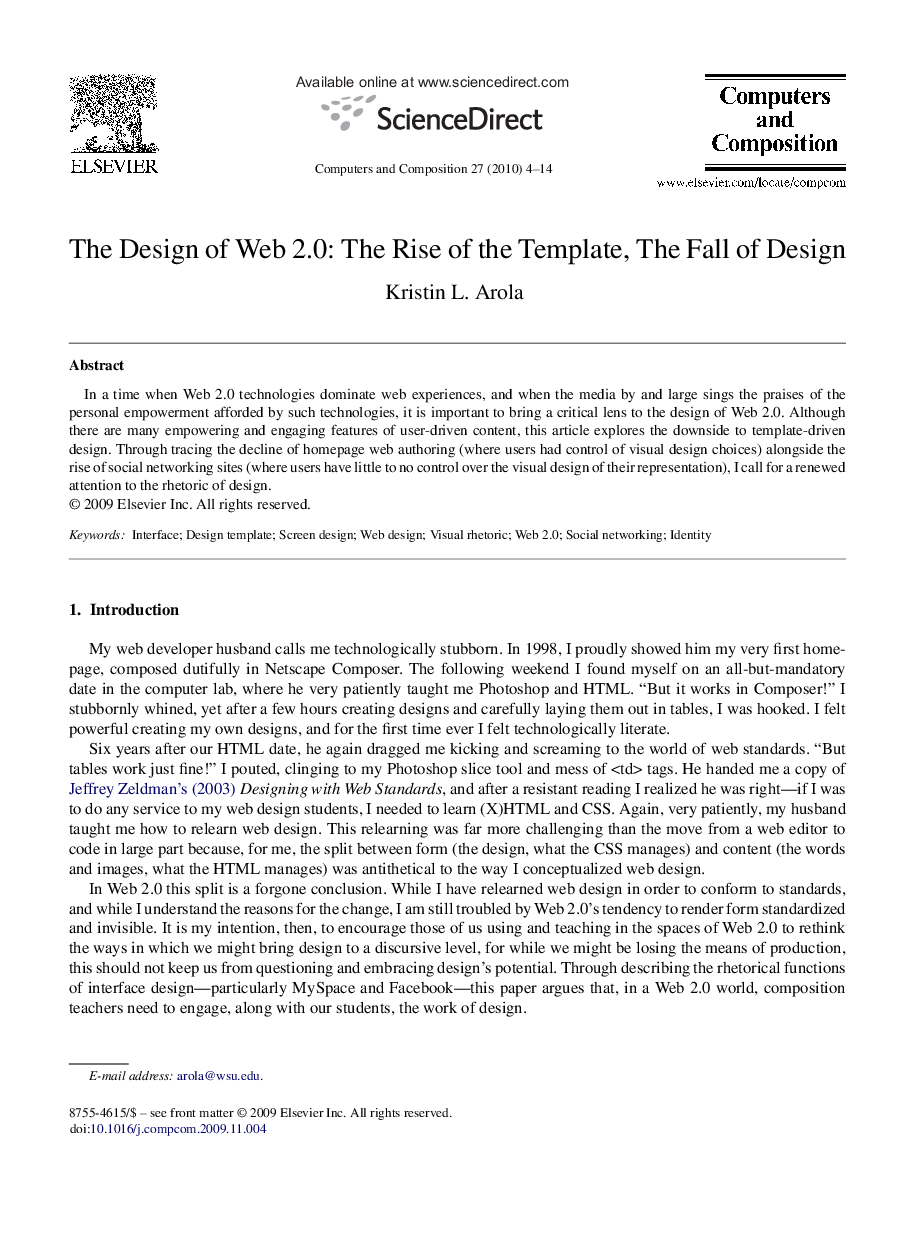| Article ID | Journal | Published Year | Pages | File Type |
|---|---|---|---|---|
| 347862 | Computers and Composition | 2010 | 11 Pages |
Abstract
In a time when Web 2.0 technologies dominate web experiences, and when the media by and large sings the praises of the personal empowerment afforded by such technologies, it is important to bring a critical lens to the design of Web 2.0. Although there are many empowering and engaging features of user-driven content, this article explores the downside to template-driven design. Through tracing the decline of homepage web authoring (where users had control of visual design choices) alongside the rise of social networking sites (where users have little to no control over the visual design of their representation), I call for a renewed attention to the rhetoric of design.
Related Topics
Social Sciences and Humanities
Arts and Humanities
Language and Linguistics
Authors
Kristin L. Arola,
